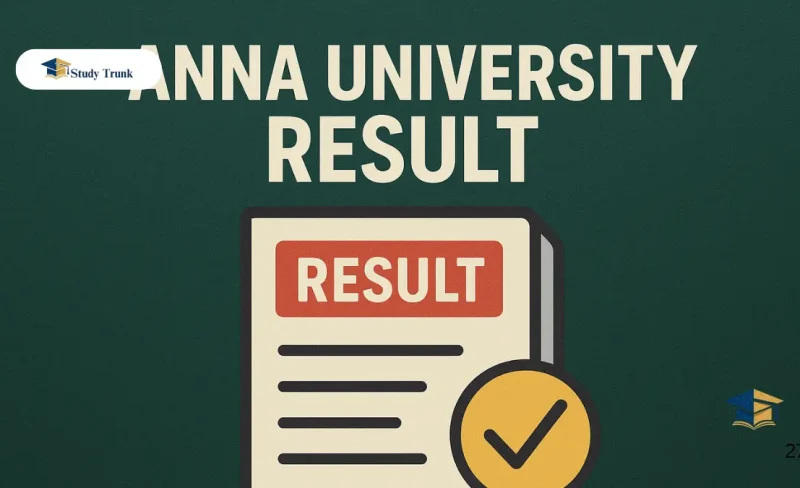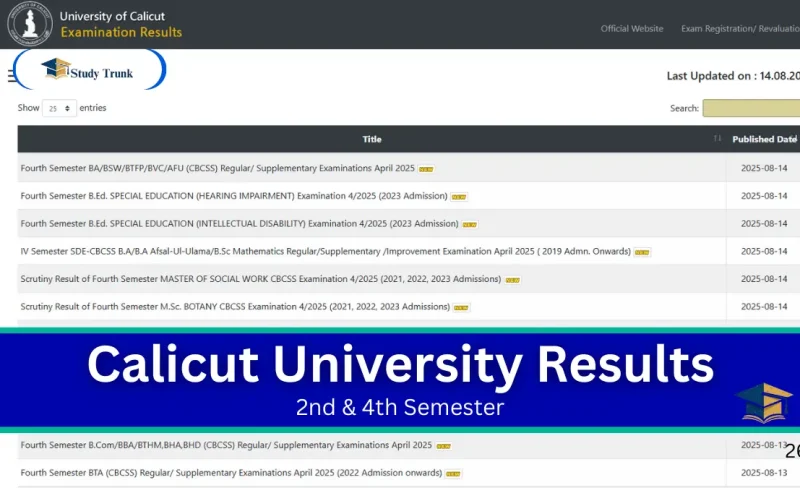HomeResults
Results
Showing 1 - 10 of 10 results
-
September 29, 2025
IGNOU, India’s top distance learning university, conducts Term-End Examinations (TEE) twice a year in June and December for programs like...
-
September 1, 2025
The State CET Cell in Maharashtra has just released the results for MHT CET CAP Round 4 2025 seat allotment...
-
August 25, 2025
Anna University Result 2025: Anna University has released the much-awaited examination results for the February/March and April/May 2025 semesters. Students...
-
August 14, 2025
Calicut University Result 2025 for 2nd & 4th Semester: The results available online are just for your reference. The university...
-
August 12, 2025
The Karnataka Diploma Makeup Exam Result for 2025 has officially been announced by the Department of Technical Education (DTE), Karnataka,...
-
August 12, 2025
BTELinx Diploma Results 2025: The Karnataka Department of Technical Education (DTE) announced the Diploma Result 2025 on 6 June 2025 for April and May 2025 exams....
-
August 7, 2025
WBJEE Results 2025: The West Bengal Joint Entrance Examination (WBJEE) 2025 is an important gateway for students aiming to secure...
-
August 6, 2025
CBSE Result 2025: The Central Board of Secondary Education (CBSE) holds a key role in India’s education landscape. Every year,...
-
July 31, 2025
RRBMU Result 2025: Raj Rishi Bhartrihari Matsya University (RRBMU), formerly known as Matsya University, has officially announced the Matsya University...
-
June 1, 2025
The MAH MBA CET 2025 results were declared on May 28, 2025, and candidates can download their scorecards from the...










